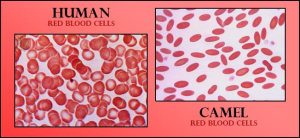In the rugged, water-starved landscapes where camels reign supreme, their ability to endure extended periods without a sip of water is nothing short of astonishing. Picture this: a barren environment, with less than 25 centimetres (10 inches) of rainfall annually. In this harsh setting, camels can go for weeks without a drop to drink. When they finally do take a drink, it’s a spectacle in itself – a camel can guzzle up to 25 gallons of water in one go. Now, here’s the kicker: many believe that all that water must be stored in those iconic humps. But hold on, that’s not quite right, where then does that enormous amount of water go? First, let’s find out what the deal with the hump is.
So, what’s the deal with a camel’s hump? It’s actually a storehouse of fat, meticulously stashed away to provide vital nutrients when food is scarce. When the going gets tough and sustenance is hard to come by, the camel’s body taps into this reserve, converting fat into energy to keep the camel going strong. Ever notice a sagging hump? That’s a sign that the camel’s been on a diet, so to speak. Once food’s back on the menu, the hump perks right back up. But wait, there’s more to this hump tale. It’s also a temperature regulator.
The Hump- A Thermal Regulator
In the scorching daytime heat, the fats in the camel’s hump act as a shield, soaking up the sun’s rays. Then, when the cool night descends, that stored warmth spreads throughout the camel’s body, ensuring it doesn’t catch a chill in the desert’s chilly embrace.
Bloodstream
Now, let’s tackle the second question: where does all that water go? Turns out, camels are like walking water tanks. They don’t store it in their humps, but rather in their bloodstream. And here’s where camels truly shine. Their blood cells are oval-shaped and stretchy – they can expand and contract. When water is scarce, these unique cells shape-shift to accommodate more liquid, keeping the camel hydrated even in the driest desert stretches.

So, there you have it – a camel’s hump is a multitasking marvel. It’s a fat reserve for lean times, a thermostat for temperature control, and even a water distribution centre. In the unforgiving desert, these humps are a lifeline, helping camels not just survive, but thrive. The hump is tailor-made for a harsh and demanding habitat.















